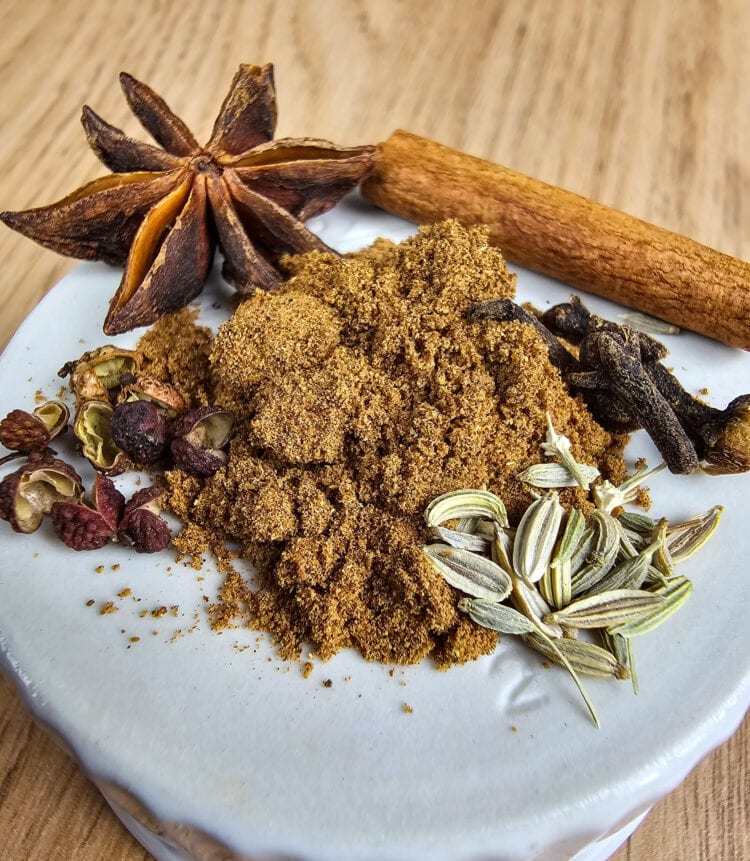If you regularly read my articles on Chinese cuisine, you’ve probably noticed I reach for Chinese five-spice often. But what exactly is this intriguing ingredient, and why does it play such a big role in Chinese cooking? Let’s dig in!
What is Chinese five-spice?
Five-spice, sometimes called five-flavor (wu xiang), is a powdered blend of five distinct spices. This dry, brown mix gives off an enticing aroma.
It delivers a layered, complex flavor and is used to elevate a wide range of dishes across Asia—especially in China—from stews to roasts. It’s naturally vegan and vegetarian, and it’s free from fat, gluten, and sugar.
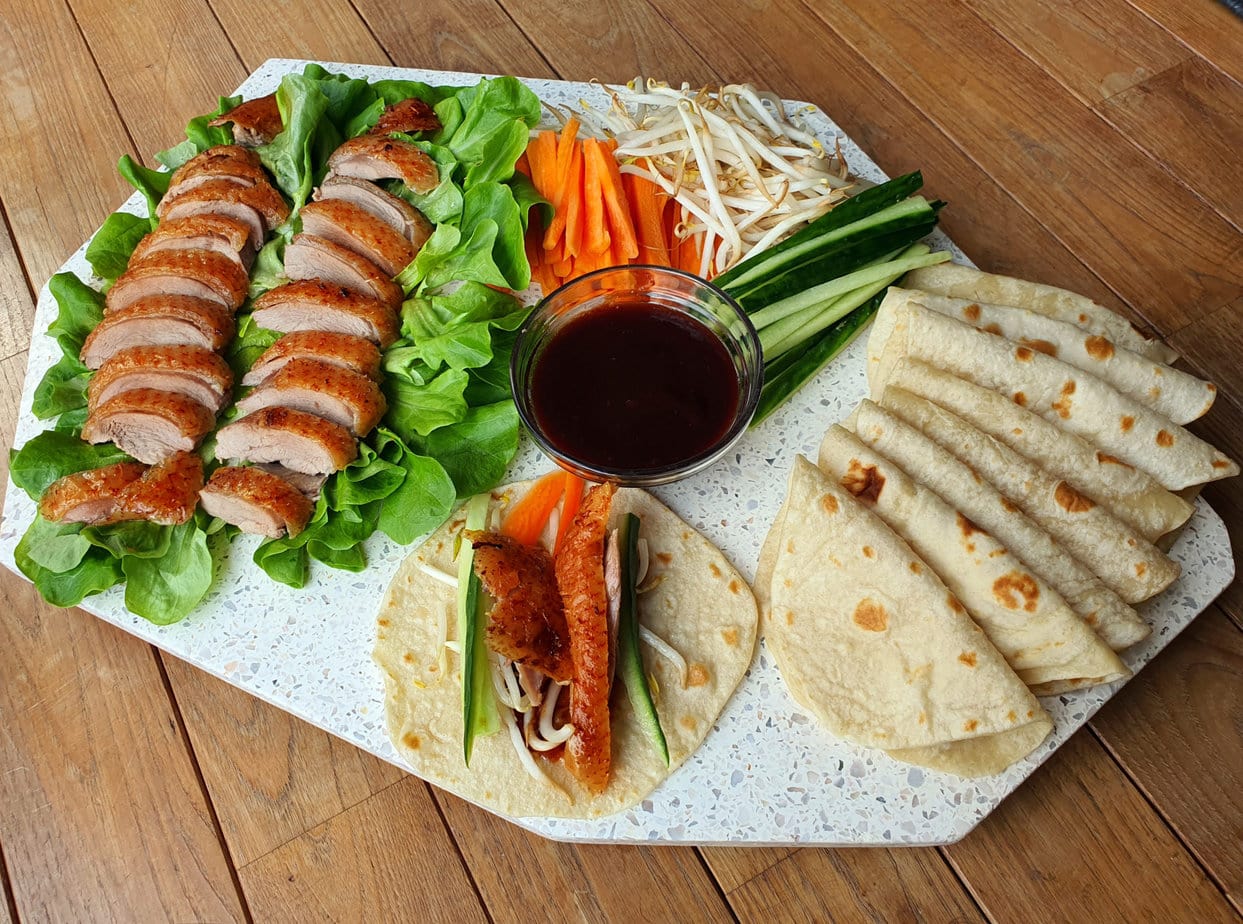
Origins of Chinese five-spice
It’s hard to pinpoint exactly when five-spice first appeared. It’s believed the blend was first used in China during the Han dynasty for medicinal purposes. The five spices are said to symbolize the five elements: fire, water, wood, earth, and metal.
These elements are thought to influence different parts of the human body: fire the heart, small intestine, and blood; water the kidneys, bladder, and bones; wood the liver, gallbladder, and tendons; earth the spleen, stomach, and muscles; and metal the lungs, large intestine, and skin. This interaction is said to balance yin and yang in the body, supporting overall well-being.
Over time, five-spice powder became a staple in Chinese cooking for the depth of flavor it brings. It later spread to other Asian cuisines and eventually to the West.
The five elements are also associated with five tastes: bitter with fire, salty with water, sour with wood, sweet with earth, and pungent with metal.
Ingredients of Chinese five-spice
In the traditional Chinese recipe, five-spice powder is made from Sichuan pepper, star anise, Chinese cinnamon (cassia), cloves, and fennel.
In southern China and Vietnam, it’s common to swap Chinese cinnamon for Saigon cinnamon and cloves for orange zest. That’s why blends from these regions taste different from the classic Chinese version.
There’s also a classic variant called thirteen-spice. In addition to the five traditional spices, it adds anise seeds, ginger root, nutmeg, turmeric, black cardamom pods, amomum villosum pods, licorice, orange zest, or galangal.

What does Chinese five-spice taste like?
Five-spice is extraordinarily aromatic. Its fragrance is so potent it can perfume every corner of your kitchen—even your home. Its complex flavor comes from the interplay of its spices:
- Star anise: licorice-like with a pleasant hint of bitterness;
- Chinese cinnamon: warm, sweet-leaning, and gently spicy;
- Fennel: similar to star anise but milder, without the overt licorice note;
- Cloves: intensely aromatic, pungent yet sweet;
- Sichuan pepper: starts with peppery heat, then turns tangy and savory, with anise- and ginger-like notes.
The harmony of these flavors gives five-spice a unique identity, letting you experience both freshness and warmth. It’s often described as a perfect balance of yin and yang.
How to cook with five-spice
In Chinese, Taiwanese, and Vietnamese cuisines, five-spice is frequently used to marinate meats and poultry before roasting, grilling, frying, simmering, or braising. Find inspiration in recipes like crispy pork, crispy chili beef, steamed pork ribs, soy sauce chicken wings, or Taiwanese chicken tenders.
Five-spice also makes an excellent seasoning for meat and vegetable stir-fries, as well as for sauces. Beef and broccoli and hoisin sauce are perfect examples. To elevate your fried rice, Pad Thai, or noodle bowls, add a pinch of five-spice.
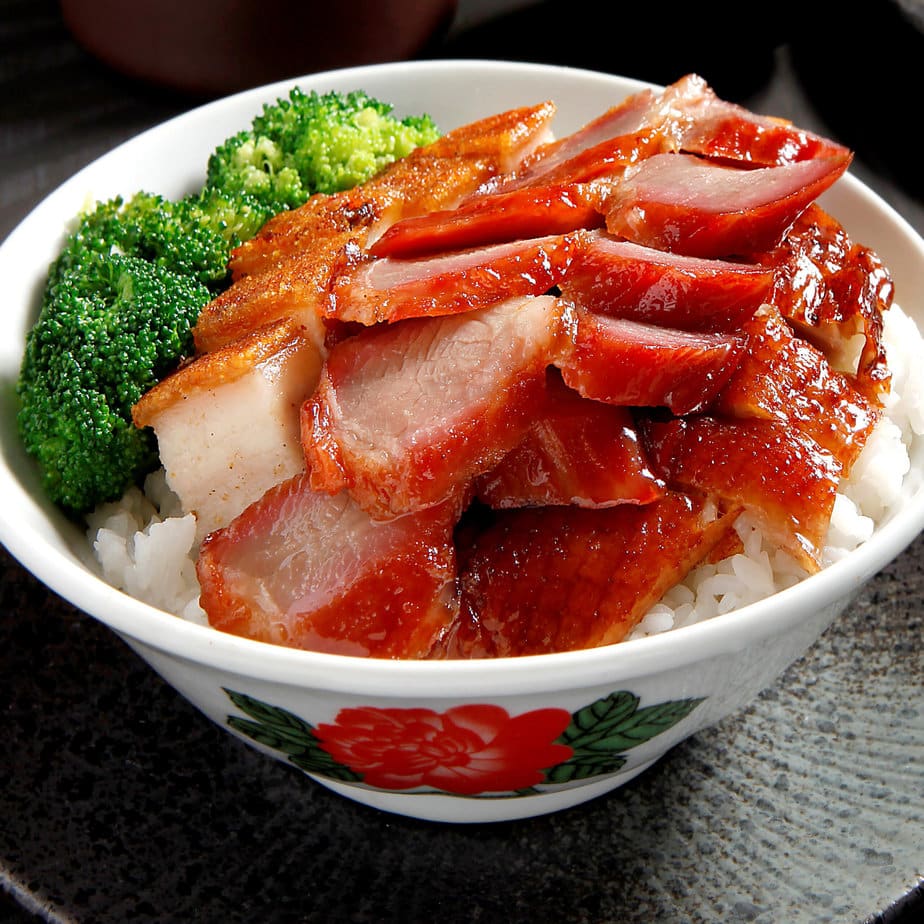
Surprisingly, five-spice also works in drinks. Add a pinch to cocktails for a warm, spicy note. In desserts, sprinkle a little over breads, cookies, muffins, or hazelnuts for a wonderfully fragrant finish.
Still, go easy. Five-spice isn’t a cure-all; it shines in moderation. Too much and it can overpower a dish just like too much salt.
Health benefits of Chinese five-spice
The ancient Chinese were right to incorporate five-spice into traditional medicine, as this blend may offer genuine health benefits. For example, it:
- May help reduce inflammation and cellular damage thanks to antioxidants in cloves, cinnamon, and pepper;
- May support heart health by helping regulate cholesterol, blood pressure, and circulation;
- May aid digestion thanks to warming spices like cinnamon and pepper;
- May support the immune system;
- May ease breathing thanks to the properties of star anise and cinnamon.
So this spice blend is not only a culinary staple but also a potential ally for overall well-being.
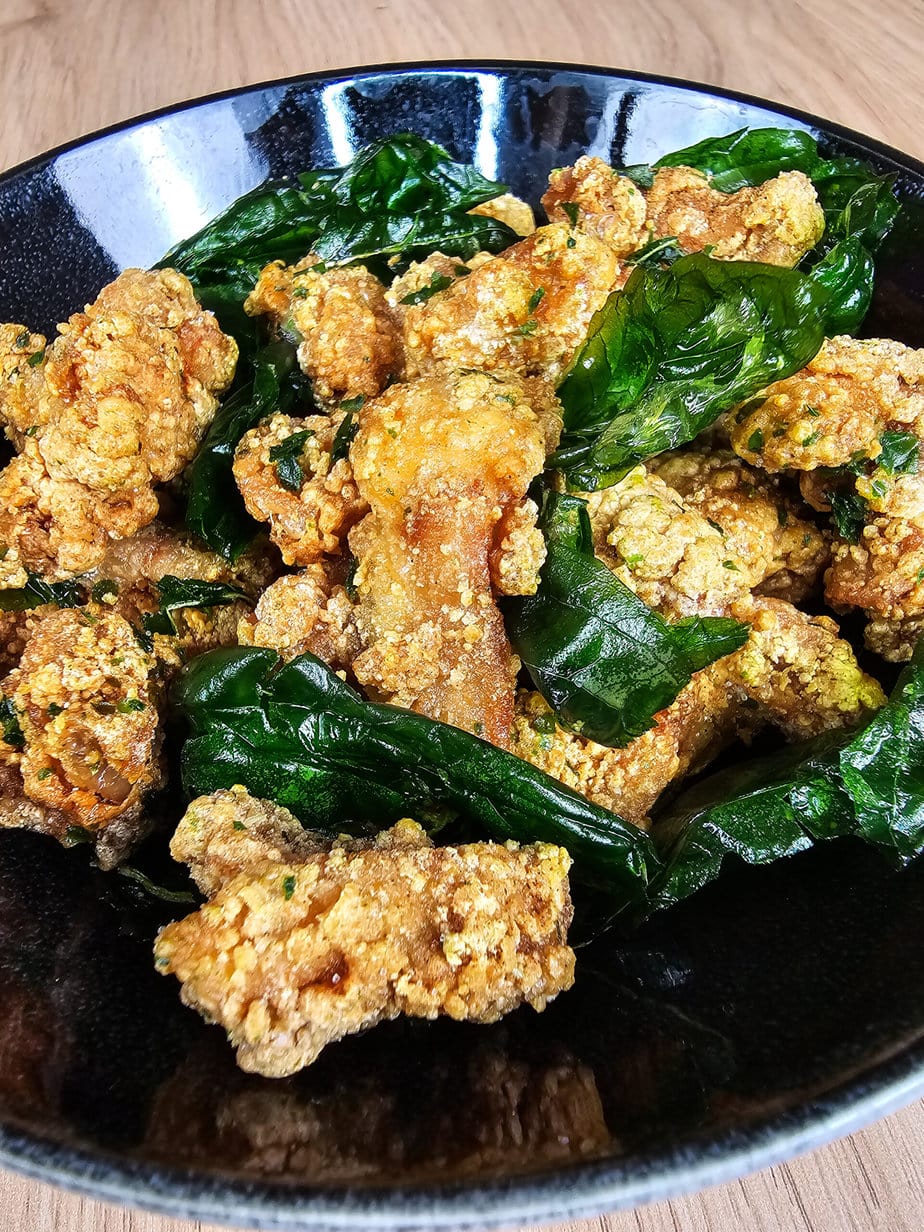
Where to buy Chinese five-spice powder?
It’s fairly easy to find Chinese five-spice in the spice aisle of regular supermarkets, usually packaged in a packet or a small jar.
However, it’s often best to head to Asian grocery stores, where five-spice is more authentic and usually cheaper. Keep in mind that spices lose aroma over time, so buy in small amounts to keep the flavor fresh. You can also buy it on Amazon
Chinese Five-Spice Recipe
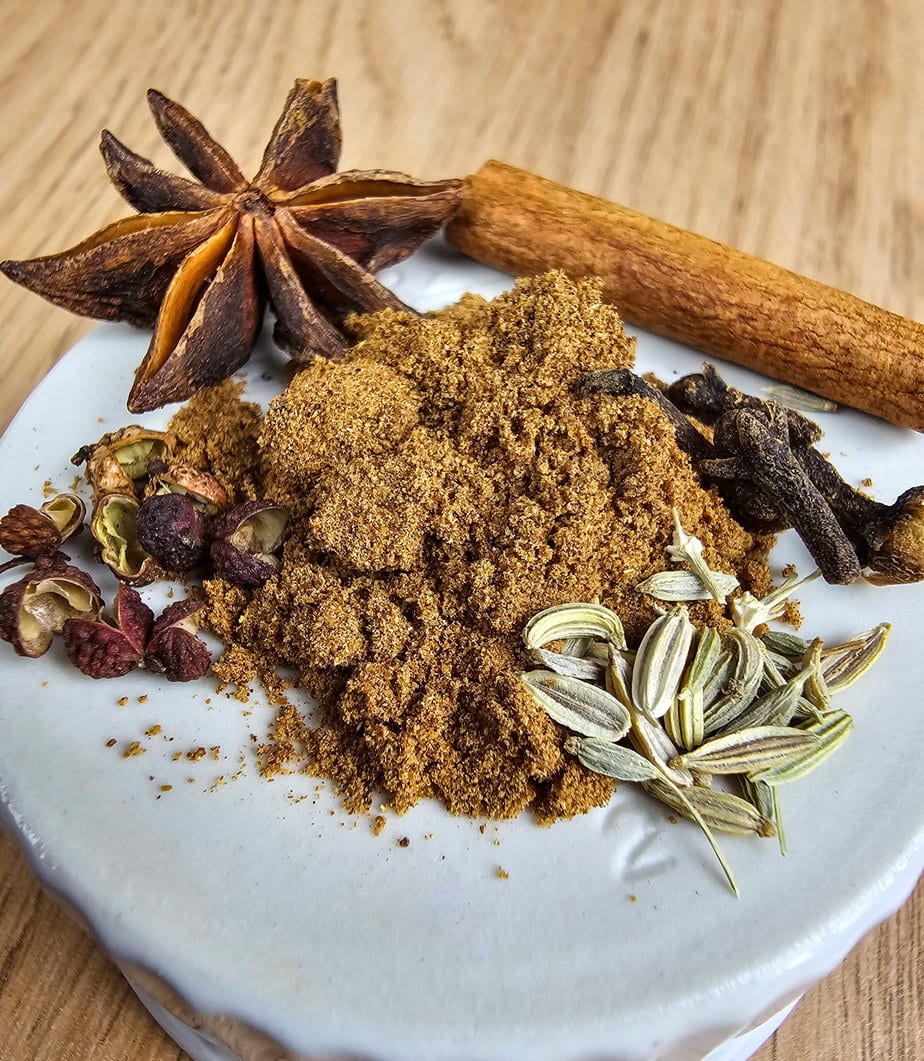
Equipment
- 1 mortar
Ingredients
- 20 g Sichuan peppercorns
- 20 g star anise
- 10 g fennel seeds
- 10 g cinnamon sticks or ground cinnamon
- 8 g cloves
Instructions
- Break the cinnamon sticks and star anise. Transfer to a spice grinder or mortar and grind to a powder.20 g star anise, 10 g cinnamon sticks or ground cinnamon
- Add the remaining ingredients and grind until finely ground and well combined.20 g Sichuan peppercorns, 10 g fennel seeds, 8 g cloves
- Sift out any large particles, then store the spice blend in an airtight container until needed.
